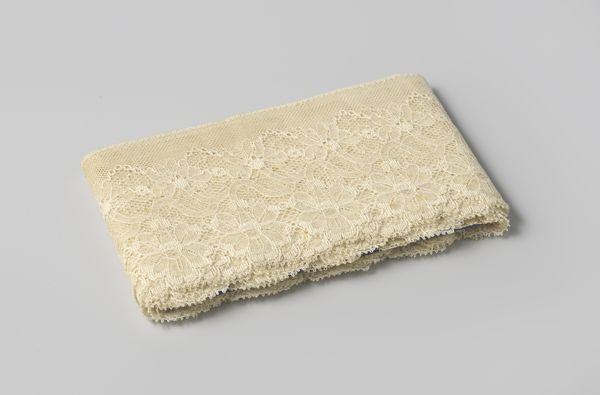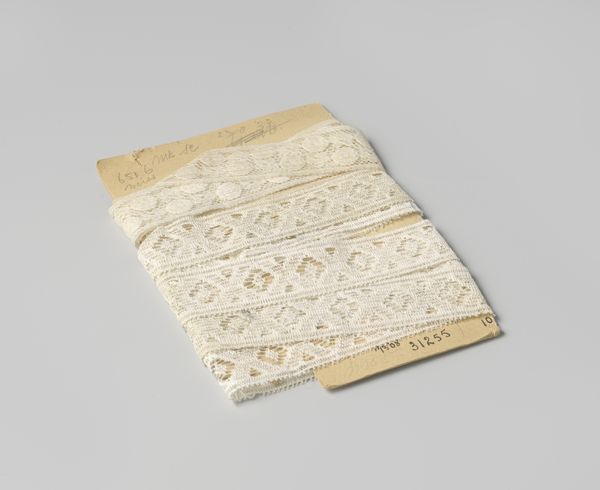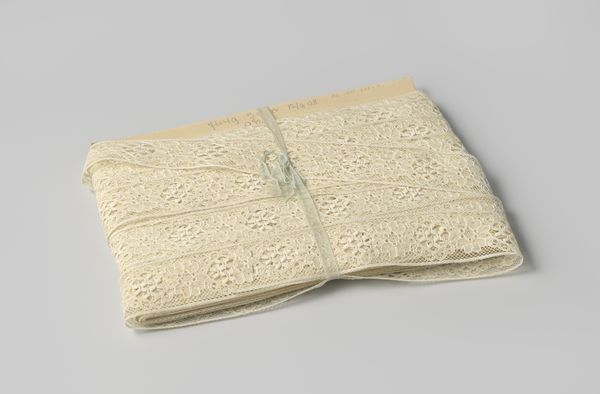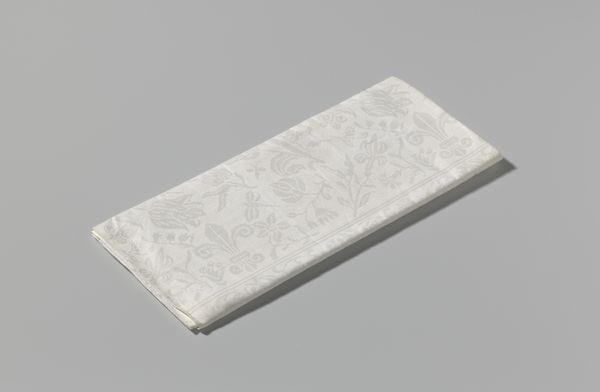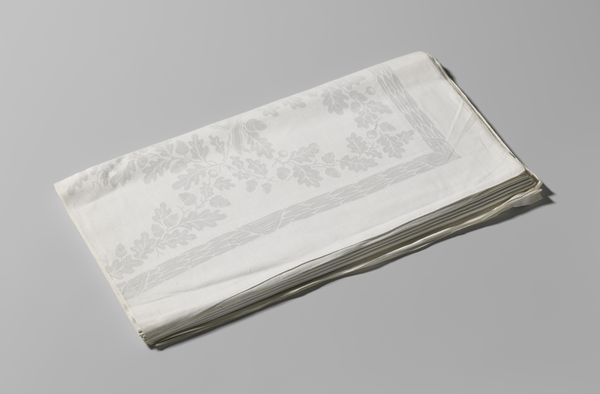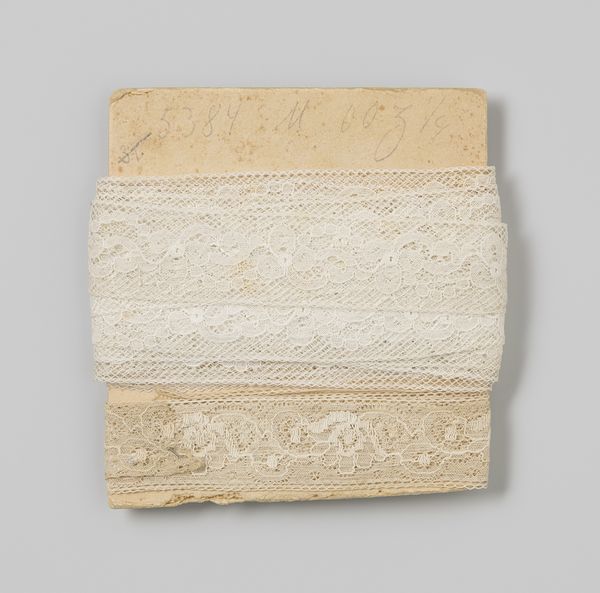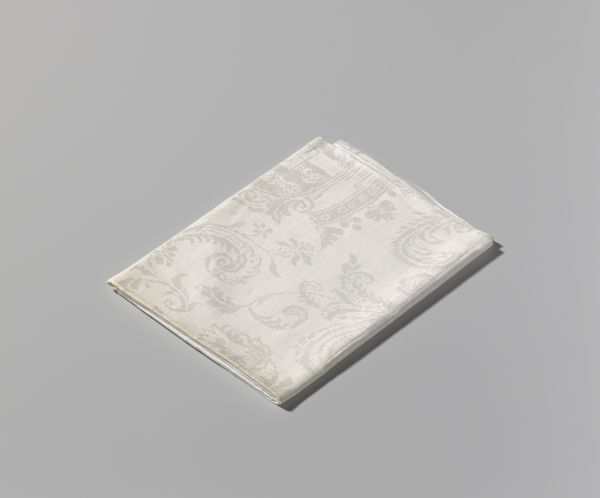
Strook kant, wit, aan één zijde geschulpt gedecoreerd met bloemmotief, op karton c. 1925
0:00
0:00
gustavschnitzler
Rijksmuseum
mixed-media, weaving, textile
#
mixed-media
#
weaving
#
textile
#
decorative-art
Dimensions: width 9.5 cm, length 28.2 cm, width 22 cm
Copyright: Rijks Museum: Open Domain
Curator: Here we have a delicate example of early 20th-century lace. This "Strook kant, wit, aan één zijde geschulpt gedecoreerd met bloemmotief, op karton," which translates to "strip of lace, white, decorated on one side with a floral motif, on cardboard," dates from around 1925. The Rijksmuseum holds it in its collection. Editor: My first impression is one of fragility and intricate order. The cream color palette soothes. One’s attention is then pulled by the regular rhythm and structure of the floral and scalloped designs along its border. Curator: It's interesting to consider this seemingly simple object within the broader context of women’s labor and fashion in the 1920s. Lace-making was often a domestic craft, yet also connected women to wider economies, especially those disenfranchised. Adorning garments with lace elevated social status, of course, but simultaneously obscures its labor and, occasionally, even its exploitation. Editor: Yes, I see that tension. Structurally, the piece exists as both open and closed—dense fields of pattern that are in stark juxtaposition with pure open space. One finds this to be particularly captivating given the work's flat, shallow presentation here. There's a conversation happening in the push-pull relationship between solid form and implied depth. Curator: This kind of decorative art really reflects the interwar period where old world artisanal skill began to mesh with machine manufacture and mass production. Who was its intended audience? Who were the women buying and wearing this sort of item? We have to look at those nuances. What do class divisions and ideals of femininity dictate? How are the women of the day negotiating them in their everyday realities? Editor: Considering this more, it is curious how such linear structure comes together to create an overall composition so lush and evocative. This balance allows me to appreciate more how it suggests the elegance of the era. Curator: Seeing it as both labor and art helps me connect with it more deeply. These remnants link to specific identities. I find them powerful reminders of how art embodies societal inequalities and lived experiences. Editor: And for me, tracing those visual elements of form, symmetry and subtle tension, the piece invites a focused examination of the era's aesthetics and the enduring allure of expertly rendered textile design.
Comments
No comments
Be the first to comment and join the conversation on the ultimate creative platform.

